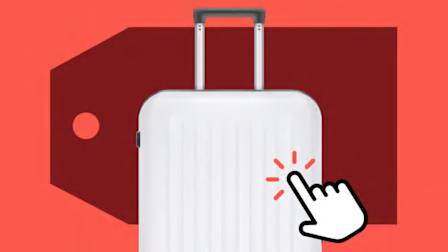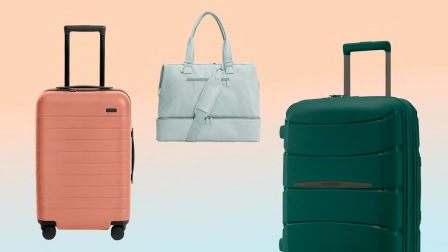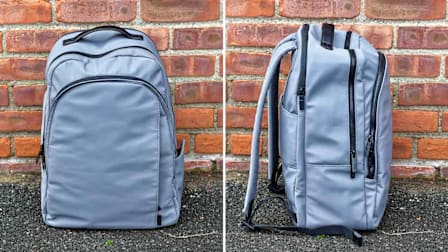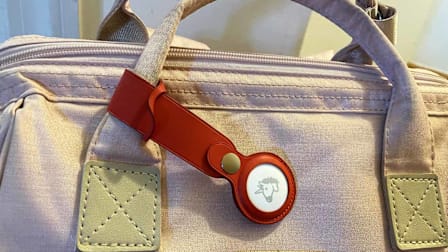How to Pick the Best School Backpack
Experts share the features to look for and smart steps for loading and carrying backpacks correctly

Whether your kids are heading off to their first year of Pre-K or back to school for their last year of high school, they all need a good backpack. For the younger cohort, what does that mean exactly? For one thing, pediatricians recommend looking for a backpack that is no wider than your child’s body.
Though backpacks are an efficient way to carry school items, they can sometimes harm more than they help. On average, 1,200 backpack-related injuries sent children under 19 to emergency rooms each year between 2019 and 2021, according to Consumer Product Safety Commission estimates.
“Backpacks help distribute the weight of the load among a child’s shoulder and back muscles, but if they’re not worn correctly or they’re too heavy, they can cause muscle strain,” says Pablo Castañeda, MD, chief of pediatric international surgery at Texas Children’s Hospital in Houston. Some other experts say overly heavy packs can harm joints and increase a child’s fall risks as well.
Here, expert advice on how to choose, load, and wear backpacks properly. CR members can also check out our Back-to-School Guide, which includes ratings for printers, laptops, noise-canceling headphones, and more supplies to help prepare you and your family for the new school year.
Essential Backpack Features
Look for a backpack that is sturdy but lightweight, and no wider than your child’s body. As for the size, make sure it extends from about 2 inches below the shoulder blades to the waist. Reflective strips can make your child more visible. And consider these features:
Add comfort with wide, padded shoulder straps. Skip drawstring backpacks, whose thin straps can dig into your little one’s shoulders and restrict blood flow to the area. This can lead to back, neck, and shoulder pain and temporary arm and hand numbness. And opt for backpacks with two straps. Those with only one strap can create an uneven load and strain muscles, Castañeda says.
“You also need to make sure your child is wearing the backpack the way it’s meant to be worn—on both shoulders,” says Sara Bohac, MD, a pediatrician at the Cleveland Clinic.
Protect the back with a padded back. Padding helps protect kids from being poked by any sharp edges on objects inside the pack, such as the corner of a textbook, and makes the backpack more comfortable to wear.
Distribute the weight with a waist strap. Though not essential, this feature helps spread out the weight of backpack contents more uniformly and may be useful for children who have several textbooks to transport.
Lighten the load with wheels. A rolling backpack may be a good option if your child sometimes lugs around a lot of heavy items. But check school policy; some have banned this style of backpack because it can pose a trip hazard for other students, clog up hallways, be difficult to maneuver up and down stairs, and may not fit in lockers.
“It’s particularly an issue for younger elementary school-age kids, since a bag can start rolling down the hall and they don’t know how to control it,” says Jennifer Weiss, MD, a pediatric orthopedic surgeon in Los Angeles and spokesperson for the American Academy of Orthopedic Surgeons.
How to Wear a Backpack
To help prevent injury, follow these steps:
Pack strategically. Try to place heavier items closest to the center of your child’s back and lighter items in the front of the pack, recommends the American Occupational Therapy Association (AOTA). But do make full use of all those nifty compartments and pockets so that most of the weight isn’t concentrated in just one spot.
Check the weight. When loaded, the backpack should not weigh more than about 10 to 20 percent of your child’s body weight, according to the American Academy of Pediatrics (AAP). (Some other national health organizations recommend a maximum of only 10 or 15 percent of your child’s weight, so consider erring on the lower side of the AAP’s advice, especially for young children.) You can weigh a loaded pack on your bathroom scale.
Help If They Have Pain
If your child complains of mild back pain and you think it’s muscle-related, you can give him or her over-the-counter pain medication, such as ibuprofen, and apply a heating pad or hot water bottle to the sore area for brief periods over a couple of days.
But if discomfort persists, see your pediatrician. “Most of the time, kids I see who have low-back pain related to wearing a backpack have another underlying issue, such as weak core muscles,” says Heather Felton, MD, a spokesperson for the AAP.
He or she could be experiencing another medical problem, such as scoliosis, which affects up to 3 percent of people and is most often diagnosed between ages 10 and 15. (Contrary to popular belief, wearing a backpack doesn’t worsen scoliosis, but it can sometimes make it more painful.)
If the lingering pain is muscle-related, your pediatrician may recommend specific back and core strengthening exercises or refer you to a physical therapist who can design a program for your child.




















